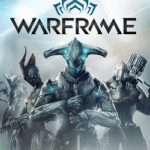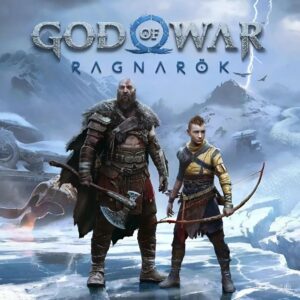Platform Wars and Pricing Dilemmas: Why the Coral Island Switch 2 Launch Highlights a Key Consumer Choice Problem
Popular Now
 Free Fire Max
Free Fire Max
 EA SPORT FC 25
EA SPORT FC 25
 NBA 2K24
NBA 2K24
 Auto X Drift Racing 3
Auto X Drift Racing 3
 Roblox
Roblox
 Poppy Playtime
Poppy Playtime
 Genshin Impact
Genshin Impact
 Warframe
Warframe
 Schedule I
Schedule I
 Geometry Dash
Geometry Dash 
The cozy gaming genre, pioneered by titles like Stardew Valley, continues its stratospheric ascent, becoming a crucial component of every platform’s library. The latest flashpoint in this evolving landscape is the impending release of Coral Island on the Nintendo Switch 2. While the confirmation of its console debut—bringing a vibrant, modern farming and life simulation experience to Nintendo’s next-generation system—is cause for celebration, the pricing dynamics against its existing Steam presence have created a classic consumer dilemma and a compelling case study in cross-platform pricing strategy.
For weeks, the news has circulated among the cozy gamer community: Coral Island, the beloved game from Stairway Games that emphasizes environmental consciousness alongside traditional farming, fishing, and relationship-building, is finally making the jump to Nintendo’s new console. However, the enthusiasm is tempered by the stark reality of the digital storefront price difference—a factor that influences purchasing decisions in the highly competitive indie game market.
The Price is Right (on PC): A Steam Sale Advantage
The core of the consumer conflict lies in the disparity between the PC version’s price and the expected console retail price. On Steam, the game’s home during its successful Early Access and initial full launch, Coral Island frequently benefits from aggressive PC game sales. During recent seasonal events, the title has been available at a significant discount, often dropping its cost to a price point that is genuinely hard to resist for budget-conscious gamers.
- Steam Pricing Power: PC platforms, notably Steam, are renowned for deep and frequent sales. Developers often use this flexibility to generate massive sales volumes, making the effective price of the game significantly lower for a large portion of the player base.
- The Switch Tax: Console releases, especially on new hardware like the Nintendo Switch 2, often carry a higher price tag. This can be due to licensing fees, the physical cartridge cost (for retail versions), or simply a pricing model designed to maximize revenue from a captive console audience.
- High-Value Proposition: The lower, discounted Steam price fundamentally changes the perceived value proposition. Why pay a potential premium for the console version when the PC version, offering a comparable (or often superior) performance experience, is available at a fraction of the cost?
This situation presents a strategic challenge for both Nintendo and the game’s publisher, Humble Games. They must justify the likely higher console price point against the established, and often heavily discounted, PC market value.
Optimization and The Promise of the Switch 2
To overcome the pricing hurdle, the Nintendo Switch 2 version must offer tangible, high-value benefits. The console’s enhanced capabilities are the developer’s most valuable asset in this argument. Fans are not just buying portability; they are buying an optimized experience that ideally closes the gap with high-end PC performance.
Key technical aspects and premium features being closely watched for the Switch 2 version include:
- Enhanced Resolution and Frame Rate: The expectation is for a stable 1080p in Handheld Mode and full 4K resolution when docked, along with a consistently smooth 60 FPS performance. Given the visual density of Coral Island’s vibrant 3D world, this stability is crucial and a key selling point over the original Switch’s limitations.
- Optimized Controls: The adaptation of the game’s control scheme for the Joy-Con, potentially utilizing new features of the Switch 2’s controllers, must be intuitive and precise to compete with the accuracy of mouse and keyboard or a direct controller connection on PC.
- Cross-Save Functionality: While unconfirmed, the implementation of cross-progression would be a massive differentiator. The ability to seamlessly move a beloved farm between a discounted Steam copy and the new Switch 2 hardware would allow consumers to maximize their investment and enjoy true multi-platform gaming. This feature would be a powerful incentive to purchase the game twice.
 The Cozy Gaming Market and SEO Impact
The Cozy Gaming Market and SEO Impact
The debate around Coral Island’s pricing is not isolated. It speaks to a broader trend in the cozy game and life simulation game genres. These titles thrive on repeat play and community engagement, making their initial purchase price a significant talking point and a driver of SEO-rich content. Consumers actively search for the “best price” and “platform comparison” before committing to an investment that often spans hundreds of hours.
For developers, the move to the Switch 2 is critical for tapping into the lucrative console market, especially since the “Stardew Valley-like” moniker guarantees high visibility and search traffic. However, the transparency of digital distribution means that the Steam sale price acts as a permanent, hard-to-beat benchmark. Publishers must walk a fine line between respecting the console’s premium market position and avoiding the backlash of a perceived overpriced game when compared to its discounted PC counterpart.
Ultimately, the successful launch of Coral Island on the Nintendo Switch 2 will depend on whether the undeniable convenience of the console, combined with demonstrable technical optimization, can outweigh the persistent financial appeal of the low, low Steam price.











 The Cozy Gaming Market and SEO Impact
The Cozy Gaming Market and SEO Impact